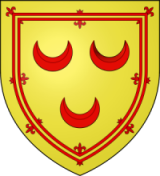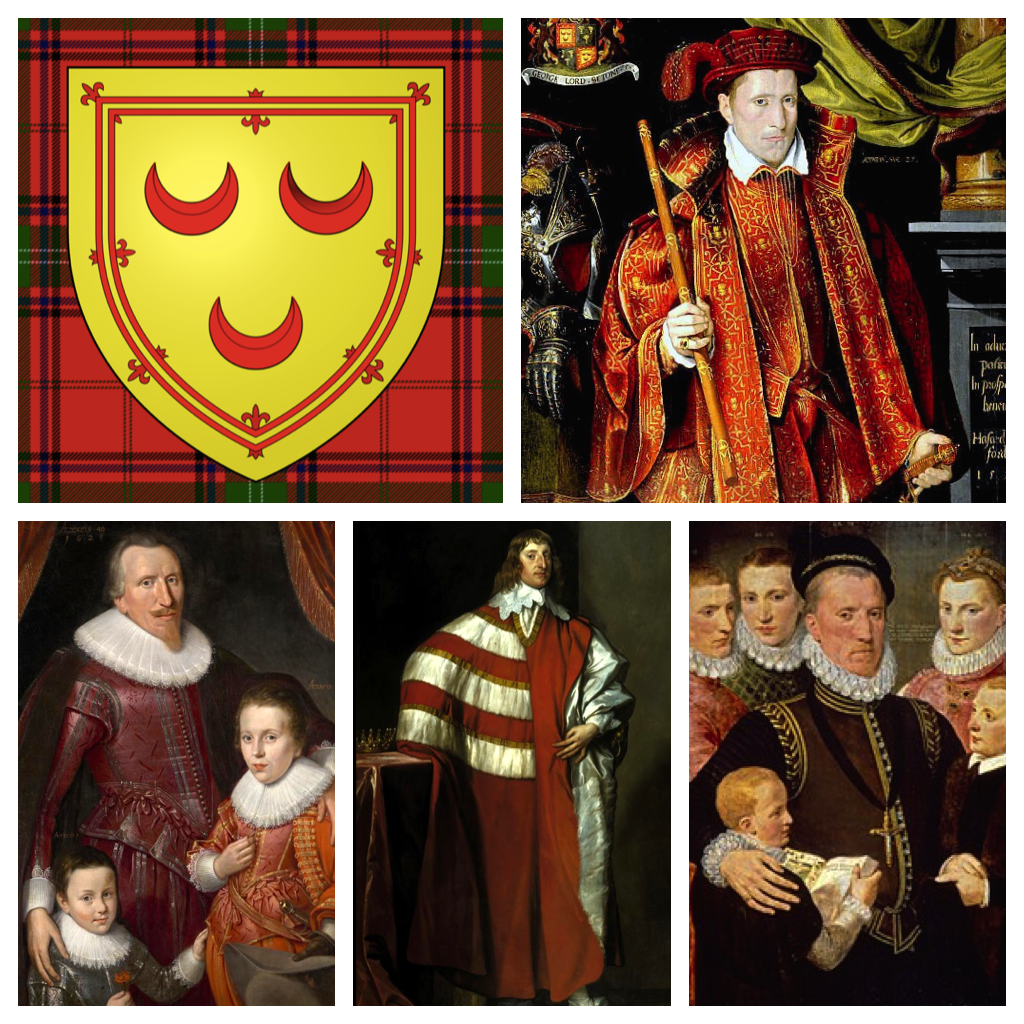
Clan Seton
The name Seton has a richly documented and illustrious past. The name comes from Scotland and in the National Portrait Gallery in Edinburgh hang several earls and lords Seton. Most striking is the meter-high canvas with George, 7th Lord Seton (1531-1586), top right in the overview.He is depicted in the red velvet costume in which he attended the wedding of Mary, Queen of Scots, and the Dauphine of France. George was one of the negotiators of marriage. After Mary's return to Scotland he became her master of the household and lord provost of Edinburgh. At the top left you see the seton family coat of arms: three half moons, surrounded by a double line, trimmed with French lilies to emphasize the French (Gaul) origin of the family.
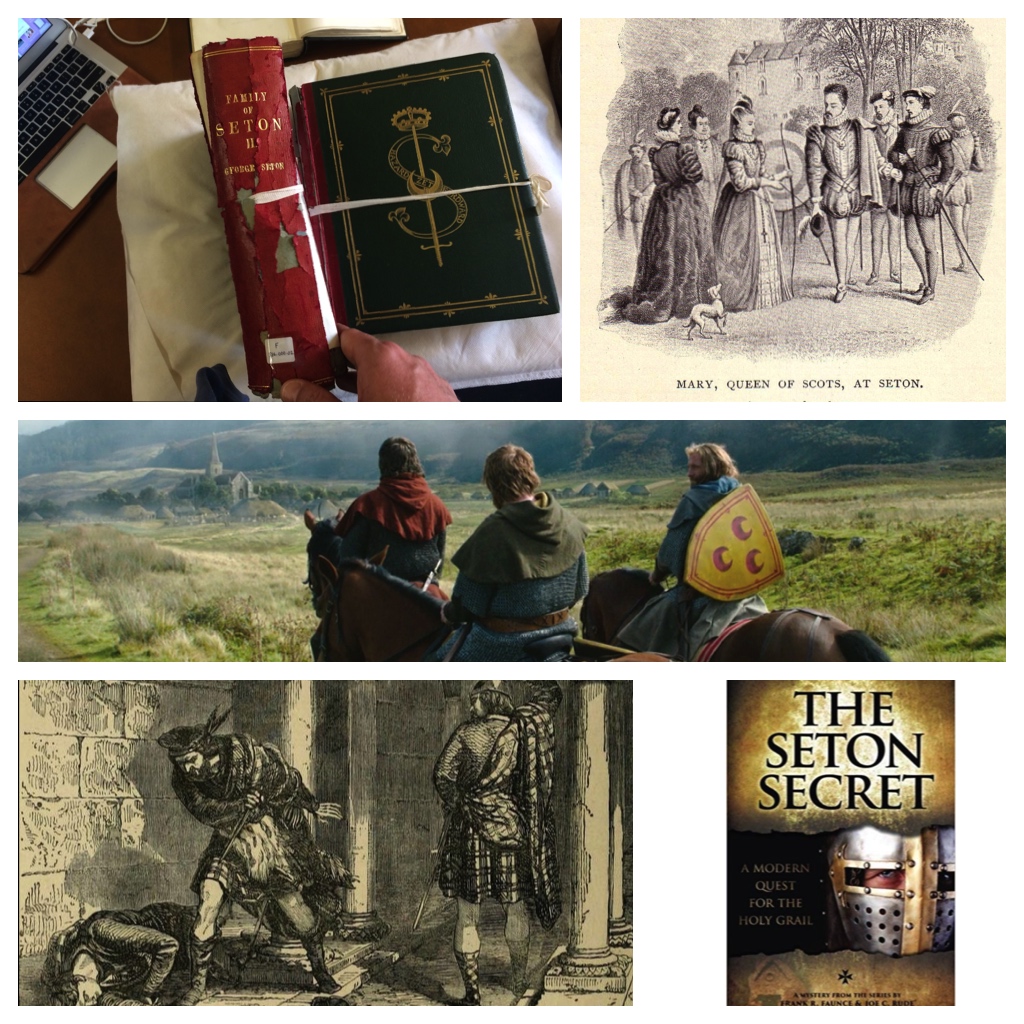
Reddest blood of Scotland
In the archive, just a short walk from the gallery, you can find a lot about the family that is said to have the reddest blood of Scotland. Age-old documents, hand-drawn pedigrees, illustrations; even whole books have been written about it. And still.In the spring of 2018 'The Seton Secret' came out, about the discovery of an old manuscript, which contains clues to the hidden treasure of the Templars.
From September 2018 'Outlaw King' turned into cinemas, with Steven Cree as Sir Christopher Seton and Chris Pine as King Robert Bruce. The film is about the murder of throne-pretender John Comyn on 10 February 1306 in the church of Dumfries.
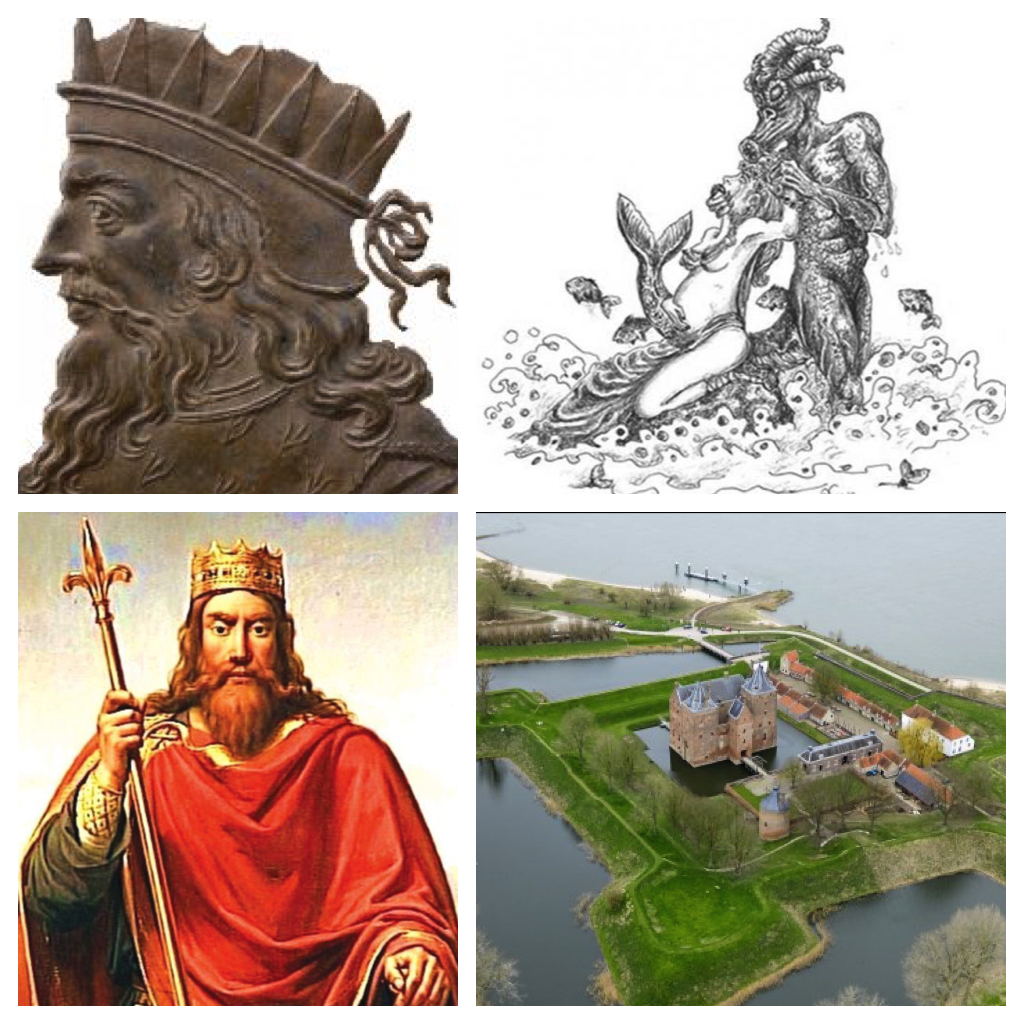
Forefather Merovech
The bloodline of the Setons leads back to the legendary Merovech, the first king of the Franks. The prevailing sex of the Meroving, as they were called, lived on the Merwede or Merowe, where it merged with the Meuse and where Slot Loevestein Castle (lower right) would be built later on. Merovech would have taken his name from this; More than that, he comes from the sea.That he comes from the sea is also a myth. Merovech's mother was assaulted by a sea monster while bathing in the river and got pregnant. Merovech was born from this and therefore would have had blue blood. This is one of the explanations of the origin of blue blood.
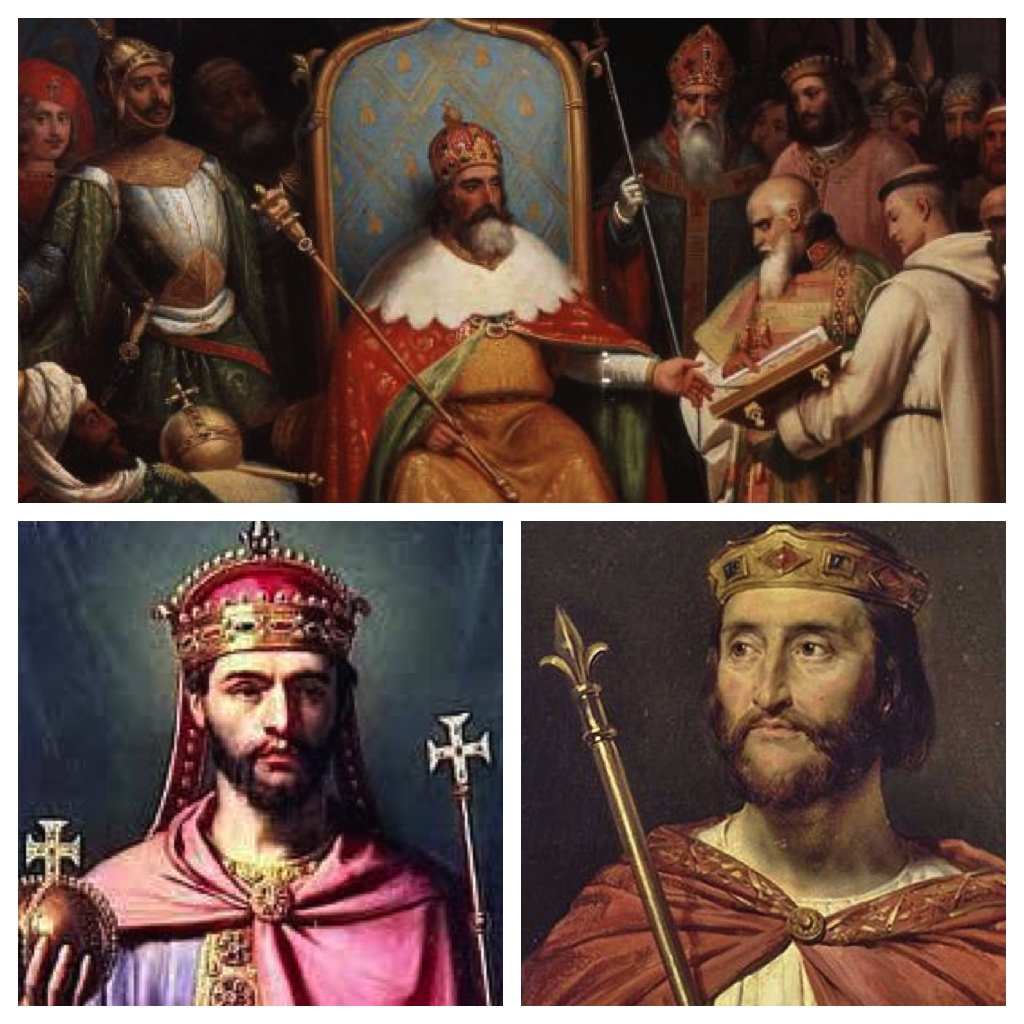
Charles the Great
The Merovingian royal family goes up in the Carolingian, by Charlemagne. He was king of the Franks on October 9, 768, and on December 25, 800, Pope Leo III crowned him emperor of the Roman Empire. Both the Germans and the French return the beginning of their national history to Charlemagne.Via his son Lodewijk de Vrome (bottom left) and the son of Karel de Kale (bottom right) the Seton line continues to his daughter Judith van Vlaanderen. At the age of 12 she was married by her father to Æthelwulf, the king of Wessex, to create a buffer for the Frankish kingdom against the raids of the Vikings.
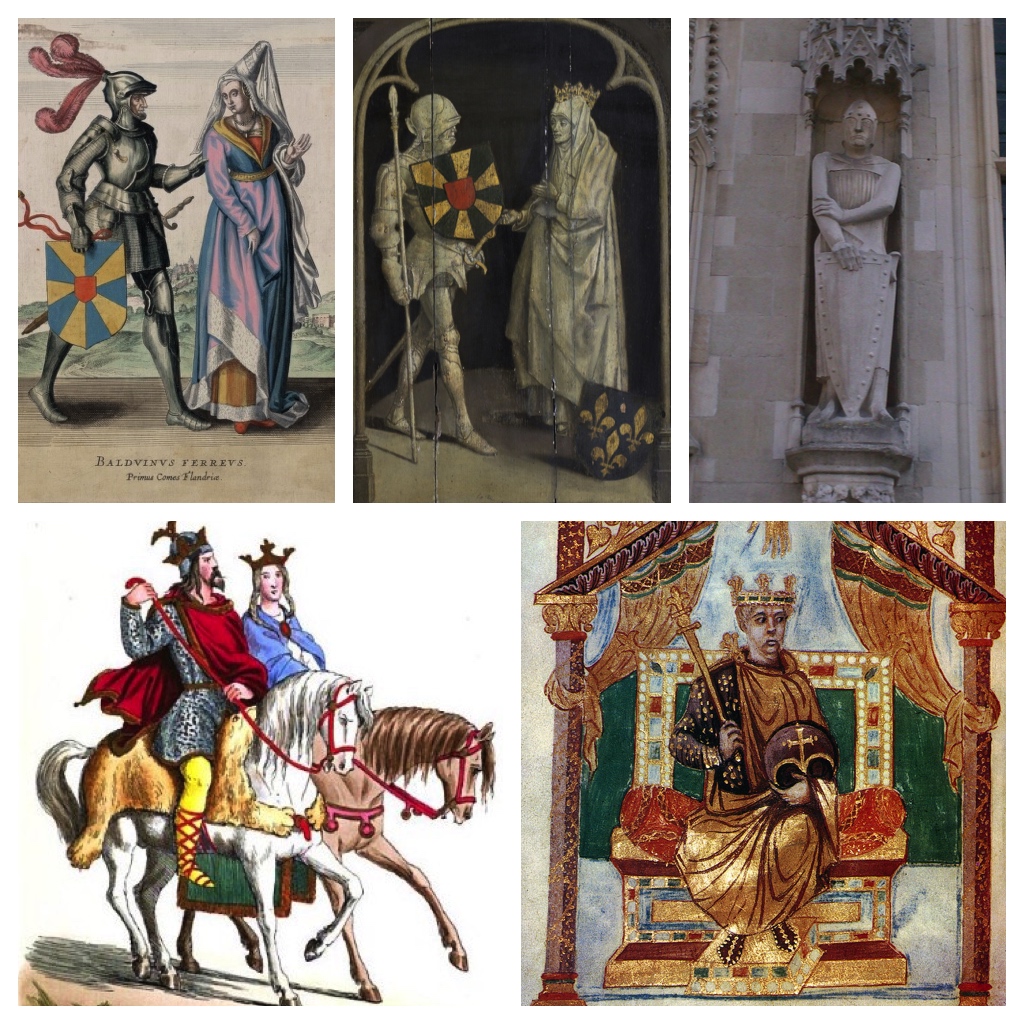
Judith & Baudouin of Flanders
When Æthelwulf died after a few years, his son claimed Æthelbald from a previous marriage, his stepmother as a bride. The whole empire spoke shame about it, and when this marriage also ended after two years, Judith returned home at the age of seventeen, as a twofold widow.Father Karel stops her, in anticipation of a good third wedding party, in a monastery. Judith escapes with Baudouin of Flanders, her second cousin, with whom she grew up at the court and they marry with the approval of Judith's brother Lodewijk de Stamelaar, who also helped with the escape. Karel is furious. He disfigures Judith and makes her excommunicate.
His daughter does not accept that. Together with Boudewijn she travels to the Pope in Rome, where she receives permission for the marriage. Karel reluctantly agrees and donates her only pieces of land in Flanders, Boulogne and Lens. Baudouin proves to be an excellent warlord against the vikings and gets the nickname Iron Arm.
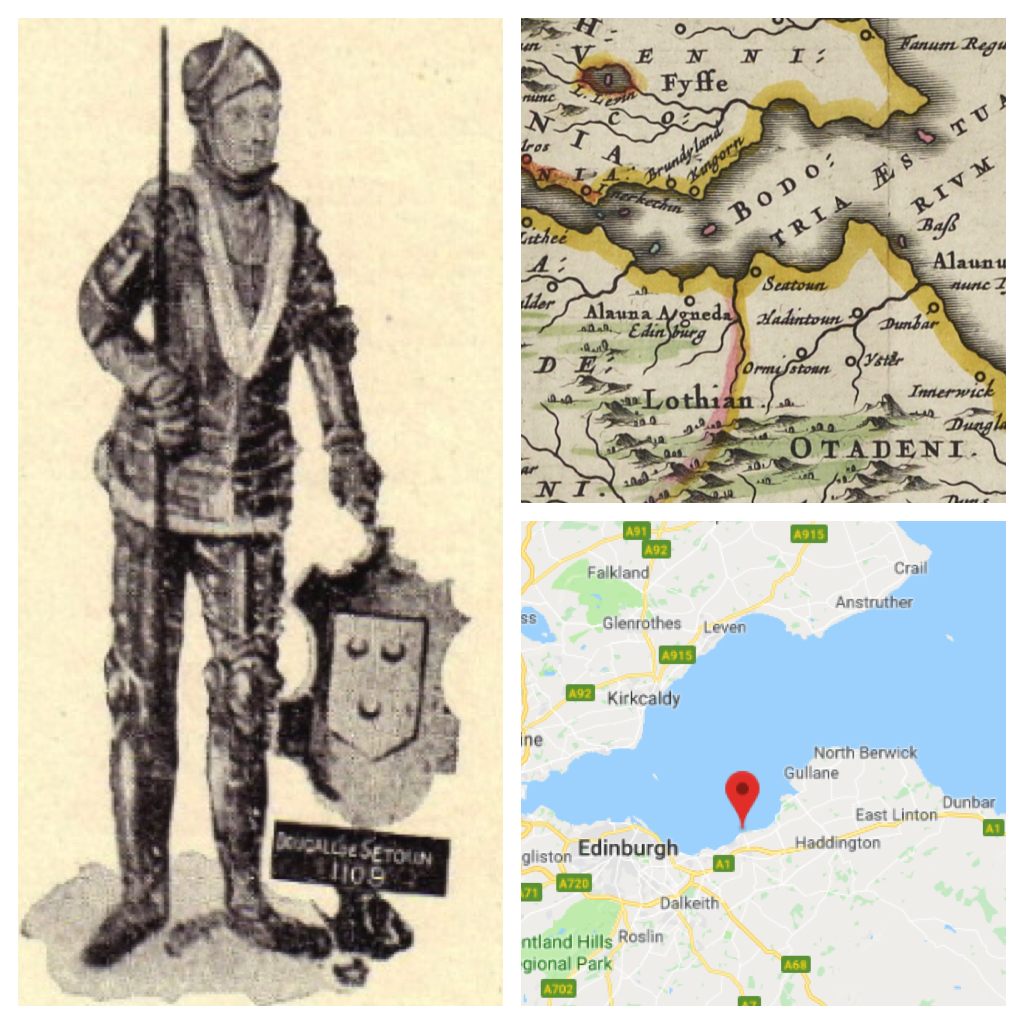
Seatoun / Setoun / Seton
Lambert van Lens is the grandson of Judith and Boudewijn. He marries Adelheid of Normandy. They get a daughter Judith, whose daughter Maud becomes the wife of King David I of Scotland, and a son Seier, who is called Dougalle, because he comes from Gaul.In 1066 Seier fights with his uncle, Adelheid's brother William of Normandy, participated in the Battle of Hastings. After the victory, William became the first Norman king of England. Seier gets large plots of land in Scotland, about 10 kilometers east of Edinburgh. The country borders the sea and is called Seatoun. Seier becomes Lord of Setoun and the name is corrupted over the years to Seton. The current place name is Port Seton.
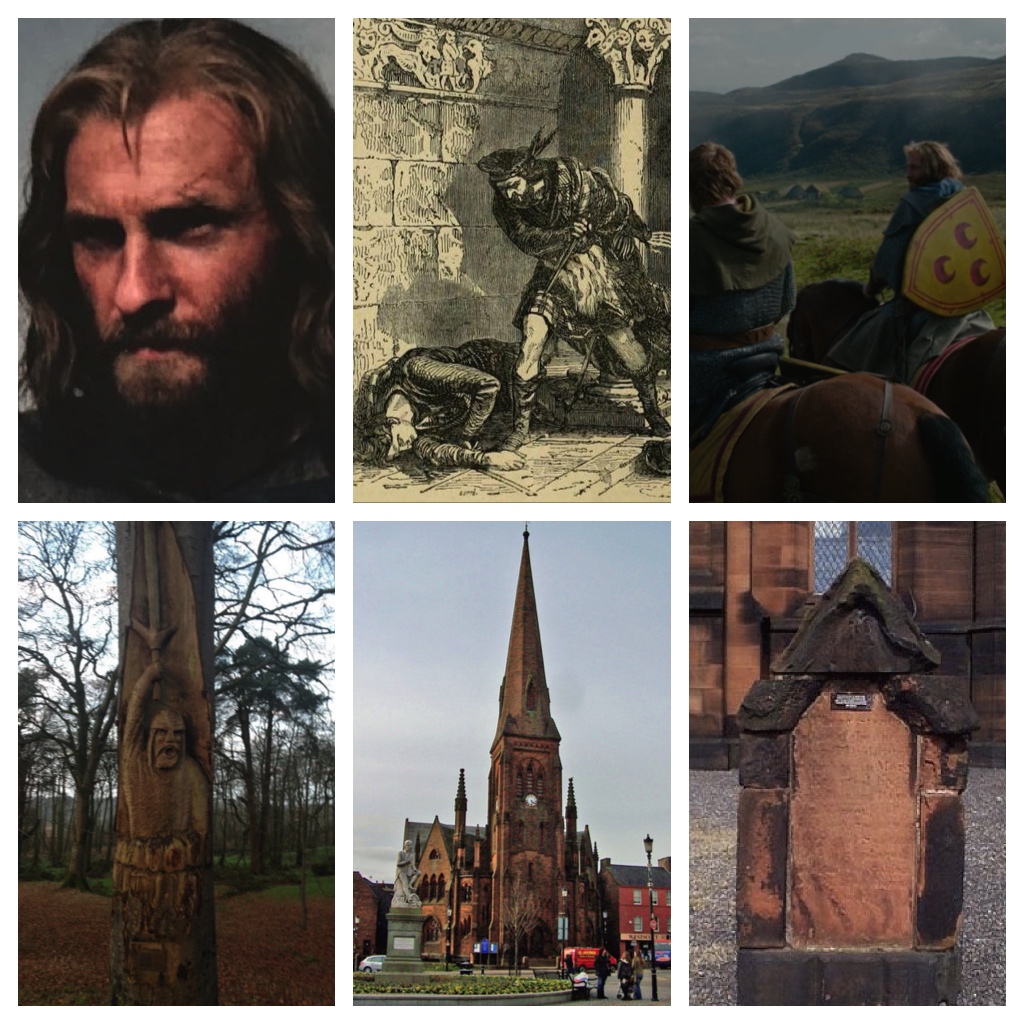
Sir Christopher Seton (1278-1306)
'Good Sir Crystell', as he was called, was praised for his goodness and his enormous strength. With his two-handed sword of nearly one and a half meters long he protected Robert Bruce. Christopher was married to Bruce's sister Lady Christina. Christopher was there at the church in Dumfries, when John Comyn was stabbed by Robert Bruce on February 10, 1306. When Robert Comyn hurried to help his nephew, Christopher knocked him down with a slap to the head. Some time later Christopher was captured and executed by the English. On the site where he was hanged, Robert and Christina Bruce founded a chapel in memory, Crystell Chapel."The noble Seton, ever dear to Fame,
A god-like Patriot, and a spotless Name,
By factious Treason in Lochdown betrayed,
And to Augusta's hostile towers conveyed;
For Scotia's sake resigned his gallant Breath,
Great in his Life, and glorious in his Death."
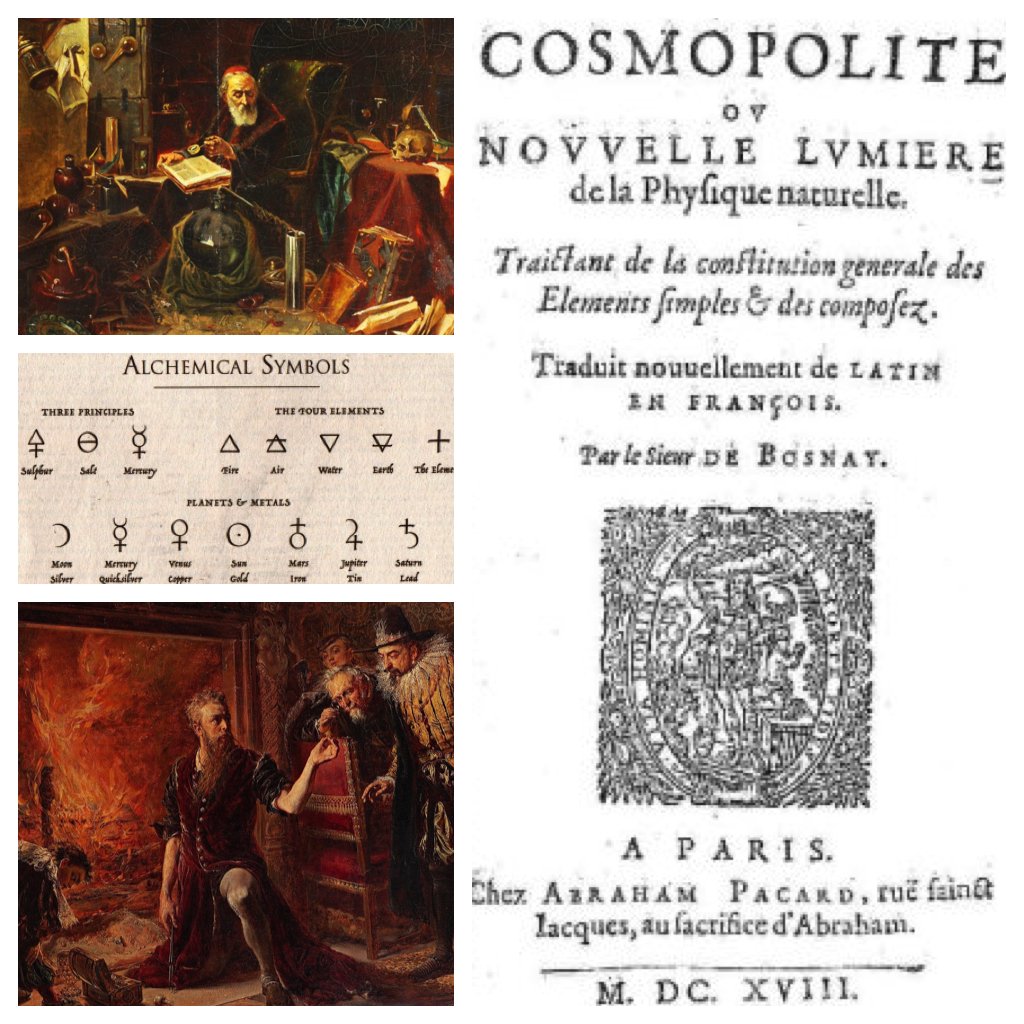
The alchemist
In the year 1602 the Dutch skipper Jacques Haussen was shipwrecked. He washed up in Scotland and was rescued by Alexander Seton, who lived on the coast. Alexander nursed Jacques and helped him to return to Enkhuizen, where he lived.Not long afterwards, Alexander traveled to Enkhuizen, where Jacques warmly welcomed him. Unfortunately for him Alexander wanted to go to Germany quickly. But before he went, he wanted to show his knowledge of Hermetic science to Jacques. He transformed a piece of base metal into gold. Jacques was so impressed that he could not resist to tell the local doctor, a man named Van der Linden.
Georges Morhoff, a great authority in the field of transmutation, confirms that he saw with his own eyes a gold coin owned by Jean-Antoine van der Linden, a grandson of the doctor, in Enkhuizen, who had carefully noted to say that the transmutation had taken place on March 13, 1602 at four o'clock in the afternoon.

Seton Palace
Seton Palace was built in the 15th century and the Seton Collegiate Church was erected next to it.The Setons remain faithful to the Roman Catholic King James II when he is struck off the English throne by the Protestant Dutch stadholder William III of Orange, who was married to a daughter of Jacobus, Maria Stuart.
The Setons are banished to the continent as Jacobites, leaving all their possessions behind.
